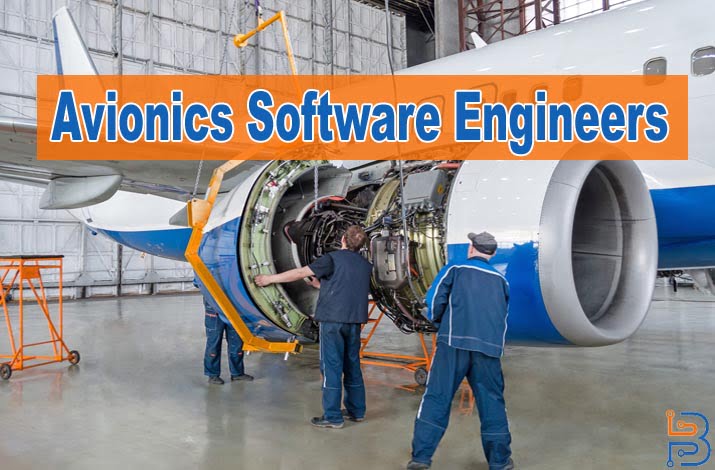
The role of Avionics software engineers in the aviation industry is significant, as they ensure software systems used in aircraft are reliable, efficient, and safe. As the aviation industry continues to advance technologically, the demand for skilled avionics software engineers is rising.
This blog post will explore the most important skills and tools that avionics software engineers must develop and improve to shine in their field. Let’s look into the key aspects that make avionics software engineers invaluable from programming languages to system analysis techniques.
The Role of Avionics Software Engineers
Avionics software engineers are experts in designing, developing, testing, and maintaining software systems used in aircraft. They collaborate with multidisciplinary teams, including hardware engineers and system analysts, to ensure that the software meets safety standards, performs optimally, and complies with aviation regulations. Today’s modern passenger jet has over $5,000,000,000 (that is 5 Billion U.S. dollars) of software development for the first aircraft of its type; subsequent copies use the same software.
Avionics software engineers usually have a solid foundation in computer science and engineering principles. They also need to be skilled at programming, problem-solving, and have strong attention to detail. Furthermore, they must deeply understand avionics systems, flight control systems, and communication protocols used in the aviation industry.
Most Important Skills for Avionics Software Engineers
Proficiency in Programming Languages
Avionics software engineers should be knowledgeable in programming languages used in the aviation industry, such as C, C++, Ada, and Assembler. These languages are utilized to develop safety-critical software systems for aircraft. A strong command of these languages enables engineers to write efficient, reliable, and maintainable code.
Knowledge of Real-Time Operating Systems (RTOS)

Avionics software engineers must be familiar with real-time operating systems as they are commonly employed in avionics systems. RTOS provides deterministic and predictable timing behavior, ensuring critical tasks are executed within strict time constraints. Understanding how to develop software that operates effectively within the constraints of an RTOS is a vital skill for avionics software engineers. There are currently fifteen RTOSs that have been certified for commercial use and are extensively employed. Companies such as AFuzion Inc. assist these RTOS companies with certifying their software.
System Analysis and Design
Effective system analysis and design skills are essential for avionics software engineers. They should be able to analyze system requirements, decompose complex systems into manageable modules, and design software architectures that adhere to safety and performance standards. The ability to anticipate potential issues and design robust and scalable software solutions is critical in avionics engineering. The new SAE ARP4754B and ARP4761A are used as standards to guide this systems engineering and safety analysis.
Safety-Critical Software Development
Safety is paramount in aviation, and avionics software engineers play a vital role in developing safety-critical software systems. They must deeply understand safety standards such as DO-178C, which outlines the mandatory guidelines and 71 DO-178C formal Objectives for developing software for airborne systems. Adhering to these standards ensures that the software meets rigorous safety requirements and performs reliably in critical situations. For avionics hardware, DO-254 and A(M)C 20-152A must also be applied.
Test and Verification Techniques
Thorough testing and verification are crucial in avionics software engineering. These engineers should be experienced in various testing techniques, including unit, integration, and system testing. Furthermore, they should have a good understanding of formal verification methods to ensure that the software meets the specified requirements and operates correctly under all conditions including robustness/performance testing, and structural coverage analysis (up to MCDC for Development Assurance Level (DAL) A).
Knowledge of Communication Protocols
Avionics systems rely on communication protocols for data exchange between different components. Avionics software engineers should know protocols such as ARINC 429, CAN bus, Ethernet, and AFDX. Understanding these protocols enables engineers to develop software that facilitates seamless communication between avionic components.
Familiarity with Avionics Standards
Avionics software engineers must have a good understanding of industry-specific standards and regulations. For example, they should be familiar with DO-254, which covers the development of airborne electronic hardware, and DO-297, which outlines the guidelines for developing integrated modular avionics (IMA). Of course, DO-178C noted above is required for all DAL A, B, C, and D software as noted above. Adhering to these standards ensures that the software meets industry requirements and operates safely in the aviation ecosystem.
Most Important Tools for Avionics Software Engineers
Integrated Development Environments (IDEs)
IDEs are essential tools for avionics software engineers, providing an integrated environment for coding, debugging, and testing software. Popular IDEs used in avionics software development include Eclipse, Visual Studio, and Code Composer Studio. These tools offer features like syntax highlighting, code completion, and debugging capabilities, enhancing developers’ productivity.
Model-Based Development Tools
Model-based development tools like MATLAB/Simulink and SCADE Suite are widely used in avionics software engineering. These tools allow engineers to develop software using graphical modeling and simulation techniques, making designing and verifying complex avionics systems easier. Model-based development tools improve productivity and facilitate generating code compliant with safety standards including DO-331. Tools such as ANSYS, Simulink, and VAPS are commonly applied (and all have been formally qualified to DO-330 to varying Tool-Qualification-Levels (TQL’s).
Configuration Management Tools
Avionics software engineers need to manage software configurations effectively. Configuration management tools, such as Git and Subversion (SVN), help track changes, manage versions, and enable collaboration among team members. These tools ensure that the software development process remains organized and enable engineers to revert to previous versions if needed. Common tools include Jama, Jira, and modified Git.
Requirements Management Tools
Requirements management tools, such as IBM Rational DOORS and Jama Connect, assist avionics software engineers in capturing, organizing, and tracking system requirements. These tools enable efficient traceability, ensuring that each requirement is addressed during the software development lifecycle. Requirements management tools contribute to the development of reliable and well-documented software systems; often DOORS, Polarion, and Jama are frequently used tools for aviation.
Automated Testing Frameworks
Avionics software engineers often utilize automated testing frameworks to streamline the testing process. Frameworks like Cucumber and Selenium, let engineers to write test scripts that can be executed automatically. Automated testing decreases manual effort, improves test results, and helps identify potential issues beforehand in the development cycle. Common tools for DO-178C include LDRA, VectorCAST, and Verifysoft.
Debugging and Analysis Tools
Debugging and analysis tools are crucial in identifying and resolving software issues. Tools like GDB (GNU Debugger) and Lauterbach TRACE32 provide code debugging, profiling, and performance analysis features. Avionics software engineers rely on these tools to diagnose and fix software defects, ensuring the reliability and safety of avionic systems. All of these tools can comply with the mandatory DO-178C for avionics software.






